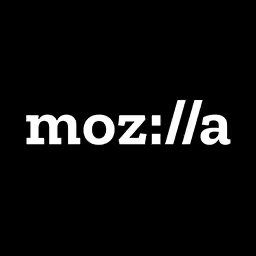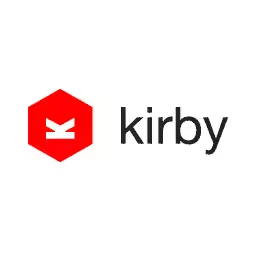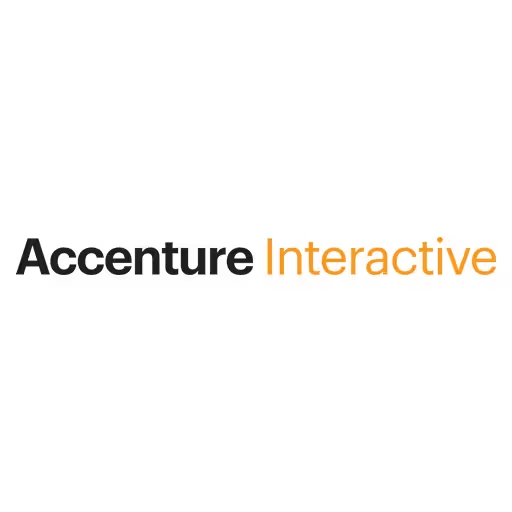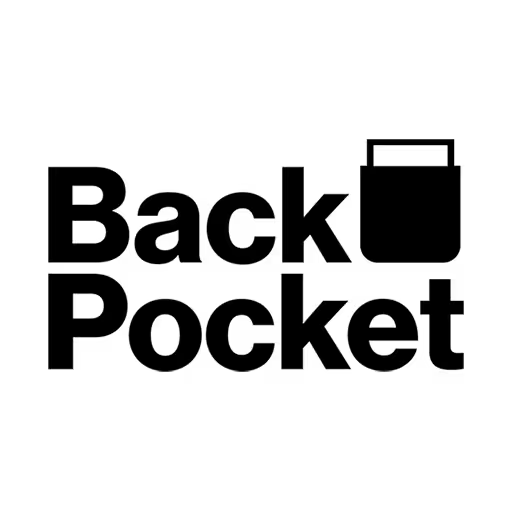Simon Collison

Simon is a designer based in Nottingham, now in his sixth year with product studio Fictive Kin. An early web standards advocate, he's written several design books, spoken at events all over the world, and organised the much-missed New Adventures events. Simon is currently exploring the ways digital technology can have a beneficial impact on our happiness, particularly where it encourages us to go outside, discover nature, and helps broaden our knowledge of the world around us.
Talk: The Internet of Natural Things
Simon will discuss the ways digital technology can strengthen our connection to the world around us, and actually benefit our well-being. He’ll lift the lid on his research so far, share some experiential optimism, and outline ideas for ensuring the products we create have a positive influence on our lives.
Transcription
[Music]
Simon Collison: I want to tell you about my friend Shana. Although we only met a couple of times, I followed her online, generally knew where she was, and occasionally she’d ping me. I guess we all have friendships like that, but this was different.
Let’s go back to last July, the first time I met her. I was in Newfoundland, the eastern coast of Canada, with my wife, Geri, during our annual summer trip. I was slumped at my laptop heading into another day looking for a research project, looking for something to excite me. That morning, I had no idea that Shana even existed, but we would meet within a few hours.
A search path led me to a book review, from there to an app, and from the app to a map. It located me. I zoomed. St. John’s. I zoomed again. There was one pin close by. There was a name: Shana.
I carried on absorbing info as we drove, and this was kind of because I had asked my wife, Geri, rather surprisingly. I just shouted at her, “Take me to Walmart,” which is probably an unusual thing for anyone to ask excitedly. But that’s where she was with her partner and her youngsters at her summer home, so we set off.
I carried on absorbing info as we drove. Shana was on Facebook, Twitter, lots of photos on Flickr. I learned she’d recently returned from Venezuela, Haiti, through Cuba, and the eastern United States. Within a few minutes, I knew a huge amount about Shana. Just to be clear, this is Shana, so you can relax.
On the way there, I found this webcam. She was at her nest. Her tracker was fitted in August 2016, and I discovered that, since then, she’d flown 16,000 kilometers. Soon, we arrived just past the retail part, an electricity substation, a kind of metal forest. The next was immediately visible, hidden in plain sight. Look how absolutely chuffed to bits I am. I didn’t even change my t-shirt.
We crept closer to the platform. I could hear her calls. There she was right in front of me, my first Osprey. In German, you may know that that’s Fischadler, meaning fish eagle. Although an osprey is not an eagle, Genus fans, it’s a Pandion. If you learned nothing today, you at least learned that.
Audience: [Laughter]
Simon: Anyway, this meeting really, really mattered to me. In my mid to late teens, I’d stopped birdwatching. I found kind of more important and interesting things to do around that period of my life. But, I remained engaged with the outdoors, hiking and so on, but not nearly enough. I’ve written a lot about that and how computers and my career pulled me away to a physically and mentally kind of bad place, really.
But, I never ever lost my love for raptors, birds of prey. That remained exciting, but I’d never seen an osprey. I didn’t even know there were any in Canada. When I was a kid, they were incredibly rare. There were like two or four or something in the Scottish Highlands, which was an eight-hour drive away, and we didn’t even have a car, so there was a fat chance of me seeing an osprey.
There I was with Shana, who I’d just found on the Internet. It was a serendipitous digital trail. It was thrilling. What’s fascinating is that my first osprey was not anonymous, not merely an osprey, but an individual, a persona. She had a name and a story. I already knew her when we met. I love that when I first met her out there at the substation, I was in a sort of augmented reality, a heightened sensory state, free armed with a layer of knowledge all thanks to this tumble of digital dominos, I guess.
What’s this all about? Well, I’m not a qualified expert in ecology, psychology, or environmental science. But--and I think this is important--I do have 20 years or so of experience designing digital sites and products. In working with people who do know about this stuff, I hope to offer a different perspective on the role future tech can play in reconnecting us to nature and improving our health. I’d like today to introduce a broad swathe of ideas and some key research principles.
What will we cover? Well, we’re already in background. I’m going to talk about this word “nature.” It’s very important. Digital optimism: that’s where I am and where I want to be. Our innate urges. A few heads went up then. And, some science.
Then, in the second part, we’ll talk about transparency in the natural world, big data, and relatable data, the individual animal, and a kind of overview of some really interesting tools and digital technologies that have excited me.
Finally, we’ll look to the future, this idea of the third age of the Internet: images and a new beauty, where we can help, and some ideas that I’m beginning to work with.
Then, the image of nature, well, the new image of nature, let’s start with this word right away. Many in technology and elsewhere will shrug at this word, “nature.” I see this a lot. It’s sentimental. It’s a red herring. It has no significance to our bold and exciting digital future.
I’m sorry about that. I know it’s ugly.
Audience: [Laughter]
Simon: It’s true that we created this idealized cultural product. We speak of nature as its always been and hold romantic and nostalgic feelings for something few of us ever really experienced.
A good German artist here. Throughout history, societies have collectively reinvented their image of nature in relation to what it is at that time. I think this is fundamental. It’s logical that we are now defining a new image of what nature is for the digital age.
There are many complicated ways to frame this, which we won’t go into. Let’s just say that our idealized and romantic image is out of date. Nature is not fixed or delicate. It’s in constant flux. It shifts and finds its way.
Right now, it’s coming to terms with us. The new image acknowledges that things are not idyllic, more resilient, and it asks if we--
Audience: [Laughter]
Simon: Yeah, that’s good. I spent ages doing that, so--
Audience: [Laughter]
Simon: Look away, clone tool experts.
The new image, it asks if we should view nature differently. Throughout the talk, I’ll consider that question.
People feel they need to choose between competing versions of life right now, that it’s either tech or not tech, not both. The enlightened insist that it’s harmful. Put it down. Don’t use your phone. You will die a lonely death, and your brain will leak out of your ears.
Well, there is, of course, a real need for common sense use. Avoid device addiction and so on. Others are doing great work to expose that and hold big tech to account, and I don’t want to regurgitate that stuff.
Fictive Kin, where I work, we’ve always maintained a human-centric outlook, I think. We strongly believed that digital technology should contribute positively to our lives. That’s always been our core principle, really. But now, I have personally become obsessed with this.
I have a desire and need, really, to push the digital technology that connects us to the natural world and benefits out well-being. There’s certainly work to be done. I think we’ve become so distracted that we’re failing, not just ourselves, but future generations.
Recently, I found this report detailing children’s reduced exposure to nature in the U.K. Only one in ten children have played in really wild places. Only one in three have seen a hedgehog or climbed a tree. Very few have actually seen a hedgehog climb a tree, but--
Audience: [Laughter]
Simon: That’s me reading into the data. Fifty percent have never found frog spawn in the wild. I like that they say “in the wild” there. Maybe they found frog spawn in the bath or--
Audience: [Laughter]
Simon: --in a soup. I don’t know. This is serious stuff. We’re also losing the language of nature. Wild words are falling from our dictionaries every year because they’re underused. I think it’s our responsibility to prevent this, not just by the obvious stuff--reversing habitat decline and so on--but also by using digital technology to educate and show how rewarding our natural world can be.
Why else should we care about nature? Well, we are biophilic. We possess an innate urge to seek connections with nature. We cannot live without animals and plants. That’s encoded into us.
Designers can learn from this. Take biophilic design in architecture where direct and indirect experiences of the natural world are key ingredients, variations in form and color, natural materials, prospect and refuge, and information richness. Architecture is turning its back on the sterile. It’s increasingly more embedded and rooted in where we live, connecting to landscapes and traditions. The right building, right place, right materials.
Importantly here, architecture learned its lesson. It designed itself into a predicament, and it’s designing its way out now by looking to nature. Maybe this is what digital technology needs to do. It took us too far away from ourselves, and now I think it has a responsibility to help us find our way back.
Author Sue Thomas talked of technobiophilia--it’s a great word--the innate urge to seek connections with nature as it appears in technology. She explains the scientifically proven benefits of nature images on our screens. It’s no coincidence that Apple, Microsoft, and everybody ships those screensavers built into your phones. It’s out of pure guilt. She connects the metaphors we use in technology as well: fields, clouds, streams, paths, currents. There are millions. She believes our future should contain more nature, but not less technology.
George Monbiot writes a wonderful book called Feral about rewilding, but a rewilding when nature takes control, yet we still enjoy civilization and technology. Love man less -- not man less, but nature more.
Okay. Do you want some brain science?
Audience: Whoo!
Simon: That’s better than I thought. I’ll take that.
Audience: [Laughter]
Simon: No repeating. I’ll take that. Let’s have some brain science. Have you ever wondered why it is that we might be better able to process our thoughts when we go out for a walk in the park? I had, so I looked into it.
Let’s think about two types of attention. There’s your voluntary, active attention. At least 10% of the room are giving me this. Now, it’s a joke. It’s probably 30%. You decide to focus on something such as work, a meeting, or reading a book. Then there’s the involuntary reflex attention, peripheral background noise in your headphones you work, coffee shop noise, and so on.
Our directed attention is a limited resource. And, compared to some animals, our brain speed is pretty slow, really. We don’t process much of what we see and hear. We filter all sorts of stuff out.
now think of a beautiful landscape view or a stroll in the park. The filtering requirements here are not demanding. There are fewer choices, so our attention system can function better. We can focus on deeper thoughts.
Finally, in this bit, let’s simplify our brain into three main networks. Moving through any environment engages these three networks. We have the executive network. That’s your intellectual task focused worrying memory. Also, cognitive inhibition here, this helps filter out all sorts of stuff that’s not important when we’re worrying about a particular thing. There’s the spatial network that orients us in our environment. You don’t have to worry about that right now, but it’s very important.
There’s the default network. That’s our free ranging, daydreaming, procrastinating, meandering, white noise network. It lures us from real work. But, it’s here that we find insights.
The executive and default are like oil and water, really. Only one is in play at once, and we tend to alternate between the two. The default network kicks in when our executive flags. The default network gives us our most human thoughts, really, our deep esthetic sense, creativity and empathy, and it allows the executive network to reset so we can rebound at top performance.
One of the compelling theories about nature is that it acts like a super drug working selectively on that default network. When we have a positive experience in nature, it engages what’s good in that network without allowing us to wallow in all the worry.
We can’t just turn off all the stress in the world, right? We can’t do it. But, maybe we can do a better job of finding restorative reprieves. See, perhaps it’s not so much the cause of stress that matters so much as how we recover from them. Nature as therapy was long considered as soft science at best, but now there’s significant interest and investment.
A good example, the Japanese and South Koreans are proponents of forest bathing. We can scoff at that, maybe, the idea of deep breathing under dabbled canopies. But, studies suggest that it truly works on our mind and body. In both countries, many millions of yen and won are being spent to ensure forest therapies are available to entire overworked and fragile populations.
Anyone know where that is? I should hope so. Munich is a really interesting case, actually, and it’s great for me to be here. You’ve been the subject of a 35 million euro renaturing scheme, the rehabilitation of the river Isar, restoring habitat, increasing green space, all this in addition to your English garden. A city that values an outdoor lifestyle and even encourages swimming, sometimes without clothes, I’m told, but maybe not this time of year.
Increasingly, humans make forecasting errors about the usefulness of nature. We fail to understand how it might help us think. We neglect that which gives us joy. We’re not even in the digital era anymore, really. We’re in a post-digital era. Basically, this it the period in which digital tech has become so embedded in our lives, we simply cannot survive without it anymore.
There’s no going back, but we must make sure that there’s balance. I found a strong reconnection to the natural world has helped me manage generalized anxiety, and I think I found my super drug again. It’s helped me, and now I feel compelled to share that with others.
Shana left her wintering grounds in mid-September last year. For the next six weeks, I followed her journey south towards South America. The journeys these birds undertake are fraught with danger. Young birds on their first migration, they die because they don’t know the hot tips. They fly directly across the ocean. They can’t land. They get exhausted, or they hit tropical storms. There are many other dangers.
But, Shana was experienced. She flew directly over New York City. Her first really interesting stop was in Florida where she fished by a four-lane highway for a week. She survived the traffic. Then, on the 8th of October, she set off again. On the 11th, she was in the middle of Cuba. By the 15th, she was basically over Guantanamo Bay. By the 17th, she was reporting from the Dominican Republic. On the 23rd of October, Pam reported that Shana was on her way across the Caribbean. On the 24th, Rob reported that there was good weather over the sea. Everything looked good.
Let’s move on to what’s happening right now and get back to this new image of nature. Many no longer see nature and technology as diametrically opposed. For a long time, we’ve been taming the natural world, making it less opaque and imposing order, as we do. We push to digitize living things and seek answers to big questions. We use animal experience to solve human problems.
For the most part, we’re used to wild animals as anonymous. But, increasingly they’re developing unique personas. Animal movements is now transparent to the point where sharks can tweet. Red kites write blog posts. Trees have email addresses. And, I’m friends with an osprey.
Today, around 50,000 wild animals are equipped with GPS that transmits a constant stream of wide-ranging data. The methods include remote sensing and environmental sensors, direct observation, and so on. This network of animals is producing vast amounts of big data.
The GBIF Network, funded by the world’s governments, draws all these sources together. To date, it holds almost a billion records, 37,000 data sets from over 1,000 institutions. Look at how that breaks down. It’s like 10% of it are animals, but then there’s so much else. There are ten viruses, which people encountered. Hopefully, they’re okay.
Look at this. What do you think that might be?
[X-Files music]
Audience: [Laughter]
Simon: That’s my view. But, scientists, they create impenetrable data, and they seem happy with that. One tag on a whale can collect 62 gigabytes of data in 12 hours. Often, hundreds of animals are involved in one study, and that creates this enormous hairball of data. It’s completely abstract.
Designers, data engineers and innovators, are often the next step. We can ask questions, help unravel and identify interesting patterns or meanings and, crucially, help share these with audiences. When we highlight interesting patterns in that data or isolate individuals, we make it relatable. Importantly, getting to know one animal can be a gateway to understanding the problems of an entire species.
By profiling an individual, real animal stories are crowdsourced like in Shana’s case: Pam, Rob, and everybody. Onlookers choose favorites, become invested, and suddenly a community grows around a tracked animal. That animal promotes a kind of human closeness.
Finding Shana was largely down to the work of this man, Rob Bierregaard, from Drexel University. In 2016 and 2017, Rob tagged birds in Newfoundland. By the way, that’s Shana’s son, Tommy Ricketts. So, don’t ask me.
The data produced is transmitted to Movebank. It’s an infrastructure used by thousands of researchers, and it’s hosted by the Max Planck Institute, about 40 minutes’ drive away, I think. Movebank created the animal tracker app, and that’s where I found Shana. By this time, I became totally absorbed in this Internet of Ospreys, really.
I talk a lot about digital tech, nature, health and wellbeing, and where all three intersect. It’s interesting to me that I see a lot of projects and digital resources and apps that they may intersect with digital nature, but digital and health, there’s a lot going in there. Nature and health, a little, very few things are in that sweet spot in the center. Very few things that people are making are actively targeting all three things. There’s an interesting opportunity there. I find it surprising because I think, in that sweet spot, are the answers to so many questions we’re asking right now about the influence of digital technology on our lives.
None of this, as far as I’m concerned, is about turning our backs on technology. In fact, as I’ve reconnected with my love of the outdoors, I’ve often found my iPhone to be a generous partner. I realize my phone is a magic lens. I can hold it up to the world around me, and it can help me appreciate what I see and hear in that world.
I use my devices to discover and rediscover places, to reveal more about my surroundings. It often enhances the emotional connection I have with special locations. My phone reveals new layers and augments realities.
[Birds chirping]
Simon: Unlike my dusty old books, even the most basic field guide on my phone--
[Birds chirping]
Simon: -- offers samples of birdsong. If I have no idea what just flew into the hedgerow, I can run through some basic Q&A to gather some best guesses. The real eye-opener for me was when I first used this magic lens to shazam a living creature. We’ve been able to identify a catchy tune playing in the toilets for some time, so it kind of seems obvious that this is possible. But, until you encounter it, maybe not. I can use this to capture natural sounds and get instant and accurate identification. Another layer is revealed; another sense is awakened.
Visual “shazam.” This is “shazam” with a small s, but I think you know that. I can take a snap with my camera--grass, flower, leaf, tree, whatever, even a hovering falcon. That one lives on YouTube--and receive the correct ID. From there I can submit these sightings to the appropriate databases, making me a citizen scientist.
[Clanking noise]
Simon: With the addition of hardware, I can further enhance the device. Here, ultrasonic bat echolocation, usually out of the range of our hearing, becomes audible. I have one of these, and it’s amazing. My phone, my bat phone, analyzes the echoes and identifies by species in real time before my eyes. Incidentally, data geeks, you’ve love this. There’s a data format specifically for bats. It’s called the grand unified acoustic notation ontology, GUANO. That means bat shit. That’s what happens when you empower geeks, so well done.
[Bird sounds]
Simon: And now, I’m becoming fascinated by machine learning, which becomes rich to so many of these tools. This Google experiment is silly but fun. Organizing thousands of bird sounds by similarity. Let’s quickly listen in.
[Bird sounds]
Audience: [Laughter]
Simon: Best thing Google ever did. I’ve also been from the top to the bottom, and I recommend it. That was a really good Christmas.
Audience: [Laughter]
Simon: Our devices offer connections to amazing projects built with single board computers, tools to assess soil humidity, monitor beehives, air quality, and so on. People of all ages get closer to wildlife, whether for professional purposes, structured education, or just the pure joy of connecting to living things.
My phone is a window into all sorts of webcams, including my own. I move these around looking for foxes, but I just get the street cats. That’s Crying Cat, its actual name, and then this is Little Ging. Here comes little Ging. Then that’s my next-door neighbor, Joan. That’s also her real name. She’s carrying flowers, so how much nature could you possibly get in one bit of film? It’s a radical flood of nature. It’s silly, but it’s fun.
There’s a shift in expression that extends across popular culture, I think. We’re seeing these wholly technobiophilic experiences. They offer constructed worlds in which to lose ourselves. Game words can be healing, free roam modes that emulate night and day with objective free hiking. There are worlds that encourage naivety, asking us to rediscover our sense of openness where we might relearn our relationship with nature.
Most of these games are not task driven. Sometimes they’re procedural, the IA driven simulations of the natural world. Many of you will be familiar with the sentimental pastoralism of rural area sim games. On one hand these games, they echo our dated image of nature, sentimental, idyllic. But, they’re also about community, developing an understanding of seasonal cycles and embracing a slower pace.
Many games are noted for their meditative qualities, playing a means to manage stress and anxiety. Some are slightly subversive, weird, and awkward, which excites me as a kind of former artist, a bit of edginess in the whole mindfulness thing. This corgi is mad. He just charges around, and then he eats stuff and his head gets bigger, and I don’t really know why. Then he decides to charge through all the sheep. It’s comical to watch that for 20 minutes. It’s very good. I recommend you play it.
Okay. Does anyone know what game this is? Shout if you know.
[Paddled water]
Simon: It really is Grand Theft Auto V in which you can go wild swimming. It’s a really interesting case today. Players go on long drives out into vast landscapes, and there are flicker pools dedicated to beautiful screenshots of constructed landscapes. It’s not all murder and carjacking in Grand Theft Auto.
I’ve enjoyed Google Cardboard as a means of kind of exploring simple VR and building my own things on my phone. But, others like 80-year-old Dorothy here from Nottingham are fully immersed. She says, “I bought a rift, as I am no longer able to go on holidays. It’s fantastic, and I’m looking at spectacular worlds. It’s thrilling to be outdoors, indoors.”
To help visualize the breadth of activity I found in my research, I made this chart. I’ll just briefly explain it. You can see that kind of take this stuff, then individuals are doing or using very interesting things, and then community and small groups are taking that further. Small science, it gets really interesting, the small studies, open data, crowdsourced storytelling, and then big science where it gets especially interesting with large-scale adoption of machine learning and political and geographical change based on what we learn about migrating animals, all sorts of different things.
Big tech is showing not a great deal of interest in this area. I don’t think they see a worthwhile return yet. The most exciting progress comes from smaller teams, orgs, studios, and agencies. They’re hacking all sorts of things and changing that image of nature, making it more realistic and more relevant.
I’ll actually go back there just because I really find the top one very interesting. I don’t have time today, but the future and what all of this means for the future is fascinating. So, as well as rethinking our approaches to ecology and the separation of animals from humans, there are all sorts of other things. Cyborg technology and how we might embed some of these things, right through to, on the right side up there, animal data. If we’re tagging animals, what about the ethics? Do they have rights to privacy and their own data? I know it sounds odd, but we’re going to odd places in the world. Even a shared language, people are very, very busy and actively working to try and find more means of communication between us and other living things.
On October the 29th, Lynn posted, “Shana has us worried and wondering.” A few days earlier, she’d been close to the Columbian shore. But, since then, seemingly adrift. The map showed a few zigzags in the water. Maybe she’d stopped intentionally. Ospreys have been known to rest on fishing boats and eat from the catch, but it seemed unlikely. The community began to panic.
Eventually, Rob stepped in with a sobering update. Dismissing the boat theory, he said, “I seen no scenario where she’s alive.” We’d just had two hurricanes over there. Had she died of exhaustion? Was she tangled? Was it a bullet? We don’t know.
It was heartbreaking to see Shana’s last position like that, just a few miles from the coast, and I was upset, really. I’d hoped, having just found her, to follow her for many years. I did wonder if this really was the end of the story.
Let’s look at the future now. In his book Animal Internet, German academic Alexander Pschera, another proponent of the new image, suggests that we’re entering the third era of the Internet. First, the human Internet, a changed society. The second age of the Internet made inanimate objects trackable and sentient. It was no longer just humans that could use the Internet.
Then you start thinking, well, if wild animals can ping us, and we can identify them as individuals with their own stories, then, as Pschera suggests, maybe nature will be changed forever. How that affects animals and ourselves in the future, and the possibilities and the ethics around this is, he suggests, the third age of the Internet.
Does any of this make sense? The Internet is a machine. It’s unnatural. It’s, in many ways, the opposite of nature, I guess. But, it’s also organic, in a state of constant permutation, self-reorganizing, a synthetic continuation of nature. It’s part of a future ecosystem where humans, nature, and technology increasingly merge.
The more we use machines to help us find nature, predict it, and follow it, the element of surprise is lost, and there is all that transparency I talked about. Our experiences will become more objective and no longer limited to time actually spent outdoors in nature. We’ll be connected to nature via digital technology 24/7. Perhaps, that will make us reconsider what we think of as beauty in this area.
We’re used to nature imagery as slick and exquisite. Think of footage that took years to get for BBC Planet Earth, footage that’s then wrapped around cinematic life or death narratives. Perhaps the quality of images that we have of nature will change. Maybe there’ll be a new beauty based on closeness and authenticity, unfocused, blurry, pixelated snaps. We might want more banal images from nearby woods, motion cameras, and reality TV because they connect us and make us more aware of our surroundings, the life or death narratives playing out in our own backyards.
As pictures might excite, we might crave them, and we’ll love that is ours from our immediate environment from living things in our vicinity, more silly and relatable stuff like these anthropomorphized birds. You know this reminds me of the reason we love cat gifs so much is because they soften the Internet for us. Loving cat gifs together, we smooth out those hard edges. I think this feeds into all of this. I think the every day and the immediate, the foreign, the silly, and the banal, it might become the exotic.
What happens next? What about the future? We get very excited about new technologies, but we have to put the emphasis on people. Put their problems first and highlight the things we need to solve. Let’s think about areas where people need help from a digital outlook that embraces the natural world and promotes better health, better wellbeing.
I’ll briefly consider four key areas where I think we can focus our efforts. Think about access for all, whoever you are, whatever you have, and wherever you live. Let’s do more to help people in urban areas find green spaces and better understand what can be found there. The nearest green space, the nearest calm place should just be a button away on your phone. Let’s offer further interpretation of the natural world; help us connect to special places; provide more tools to help us understand our surroundings and open our eyes.
Education: Can we better facilitate educators? Several teachers in the last few months have told me that technology and wellbeing are big concerns. They welcome good design that enables and improves education. Teachers are massive content creators, and there’s a great opportunity to work with them to better understand what kids need, to try out exciting, small projects, and also drive ambitious, mass participation projects, maybe. It would seem like an incredibly important place to start and hugely rewarding. If we do good work there, then we’re a partner to the teacher, and we can be a partner to the doctor, maybe.
Can we help reduce stress, promote balance, and restore this nature deficit and, generally, push a digital society towards better physical and mental health? I’ve mentioned access for all, and this includes those unable to get outdoors, whether through physical or mental health, PTSD, grief, whatever, even loneliness, which is a huge problem. In many cases, tech is a guilty party there, but perhaps it can help find a pathway out of that.
Can we use digital tech to better highlight conservation? Can we turn more people into citizen scientists? Can a new era of digital tech work for all living things? Does it have a role to play in helping unite and amplify our voices? Can it better facilitate or remodel the activism required in the face of damaging policy change?
We should each ask what we can do. I’m building a resource to pull all this stuff together and some other projects. I’m hacking around with single board computers and little pies and doing sorts of bits and bots. But, in reality, I’ll make no earth-shattering progress there. I’m a designer and a researcher. I’m best at listening, empathizing, and imaging, I guess. For now, I’m trying to visualize digital futures and rendering experiences that might serve us better. It’s early days for me, I admit.
I’m excited about a resurgence of calm technology, tech that informs but doesn’t demand our focus or attention. I’m starting by rethinking our relationship to operating systems. The OS is the soul. It’s embryonic. Everything flows through it. It’s a really great influence on whether our day is good or bad.
I started thinking about basic needs, recent experiences, and all this future technology: ID tools, VR, ALL RIGHT, sensors, time, geolocation, machine learning, and even artificial emotional intelligence, systems that can figure out how we’re feeling. What can we do for humans when we combine all this stuff? It’s early days for my concepts, so I’ll introduce a couple of bits and pieces starting with a diagram.
Imagine that’s your phone. It’s very minimal. Imagine your OS works something like the one on your phone right now. It has some default tools, settings, wallet, camera, messages, whatever - the stuff you need. There they go.
And, as now, you can download apps. In working through this model, it kind of became clear that apps still serve as well. It’s not their fault, any of it. One app can be useful to many different aspects of our daily lives, too. For now, we still have apps.
Now, in this idea, some of these apps are spaces compatible. What does that mean? Imagine you have this thing called spaces. The OS might offer some by default, and you can also create your own relevant to the different needs in your life. You’d cycle through to find the space you need, or maybe you would enable the device to trigger them at the appropriate time as you move through environments, as you enter certain geofence locations: office, home, the library, the place where you usually go running, at a certain time of day, morning, evening. It may even be triggered by your mood.
As I mentioned, one app can be useful to many different aspects of your lives: the browser or camera, obviously. As you see here, an app can be applied to multiple spaces. Default app D features in each space. That might be the browser but contextualized. If you’re studying, it’s the bookmarks related to that.
Here’s downloaded app 1. That might be Skype. Spaces compatible apps can enhance what you see and do in a certain space. The simplest example would be these notifications. When you’re in your study space, for example, my wife is learning Japanese; she may call that Japanese. Skype might present only notifications from her teacher or designated study friends.
When you’re in a space, the idea is that you are immersed in it. It has your voluntarily active attention. Involuntary distractions from elsewhere in the OS are completely removed. That’s the base model. That’s like feature one for the OS I’m exploring.
Let’s take a quick look. Again, these are just sketches. Imagine minimized interfaces. The whole thing is less intuitive. It’s more focused. This OS wouldn’t just rely on vision. Peripheral sounds and shapes feel, good haptics. It would help you discover things without even having to look at it.
You’ve still got your apps. Don’t have to worry about that. But, the really interesting idea, of course, is spaces. Imagine a fitness space, maybe body. It’s triggered when you’re at the gym or where you typically run. That, for example, would pull up your running Spotify playlists or whatever, not other stuff.
Some sort of mind space, so we heard earlier about kind of biology and biological rhythms, meditation, and mindfulness. Maybe your home lighting configurations, projections, and all kinds of sound medicine.
An indoor explorer space of some kind. Help those unable to get outdoors to connect with nature: sound, VR, AR, photo albums and screenshots from their digital adventures, blurry images from those connected cameras, and access to the connected animals that they track.
You’d be in control of approving which spaces would be influenced by which app. Again, just a sketch, but I like the idea of a kind of designated nature space or outdoors. Along the base we have actual apps or modules relevant to that space, so guides is appropriate in this space, you’re connected cameras, observation data. Slide along and there are more relevant apps, ID tools baked into the OS, one button escape to your nearest green space.
We have notifications only relevant to the space we’re in. I’m in nature. I’m thinking only about nature, so I only want to see what’s appropriate. Automatically interprets surroundings, explain habitats, tap into geolocations, maybe we have a future where nature reserves, schools, and institutions have open databases that our phones connect to as we move through. Review and submit those citizen science contributions.
Again, these are just sketches. These are not deep stats. I know that. This is gently persuasive tech, though, subtle indicators for positive and negative behaviors. Get an overview of the time you spent in each space, your balance. This week, you have a nature deficit. You spent too long working.
You know, this could all just be rubbish. [Laughter] It could spark some new app ideas, but it’s fun to try, and it’s really, really fun and liberating to think at an OS level.
I also love to think about new and unfamiliar hardware that ties this to more of our senses. We’ll see where this goes, but I’m prototyping. I’ve started a pie build here for this. My colleagues at Fictive Kin are interested in helping, and there are other little collaborators here and there. It’s just a catalyst for ideas. I don’t expect to send this to Apple and it will be on my phone, but it’s a really fun idea.
Let’s wrap up. There’s an enormous amount of work being done with this new image of nature, really, so little of it by big tech. You really read about this kind of stuff on The Verge, but maybe you’ve seen it as well.
I think we’ll see more rhetoric about wellbeing and balance. In fact, I noticed in the last week or so there were kind of unexpected pressurized statements from Facebook about their newsfeed and Apple about child usage. They’re telling us how wholesome they’re going to be. I think there’ll be a high stakes race, as big tech looks to salvage its increasingly tarnished image. They’ll want to promote balance and ideas that maybe utilize this new image of nature. I think there’ll be a trend for biophilic inspiration. Those investments in AR and VR, I think all that stuff will pay off, and there’ll be a new wave of truly multisensory natural experiences, I think. I think operating systems will be calmer, respond to our moods and environments, and there’ll be more sound and vision as medicine.
I think, as we’ve always done, we’ll end up looking really far backwards to people who have already worked out this stuff in other ways, in other environments, and then we’ll go, “Oh, yeah, that’s what we should do.” I’m reminded of this metaphor for ubiquitous technology from the late Mark Weiser, Xerox PARC, way back in 1993. “Our computers should be like our childhood, an invisible foundation that is quickly forgotten, but always with us and effortlessly used throughout our lives.”
With a new image of nature and a greater care for living things comes this new environment in which to make stuff. I guess we have to ask what we want that environment to feel like. It can be increasingly hard to be excited about digital tech’s ever more convoluted processes and tools, but it should be easy to stay excited about the longer game and what you’d love to change with that digital technology. I’m sure all of us here have a conscious about what we’re making and, if that’s true, then my goal is your goal to see what good we can do.
I had a tough intro for that Internet of Ospreys. Although Shana likely died, as did her son, Tommy Ricketts -- sad news -- the saga might not be over yet. Rob names the other youngest Lucky because, on his autumn visit to tag the young birds, she avoided all attempts at capture. Lucky left Newfoundland just after her mother and brother, and there’s every chance that such a smart, young bird might have had a successful migration. We’ll know for sure in spring. Ospreys usually return to the same area, even the same nest.
With Shana gone, there’s hope that her daughter will return and bring up her first family in the substation near Walmart, on camera, delighting the same community of onlookers. Perhaps, we’ll get lucky. Thank you.
Audience: [Applause]






